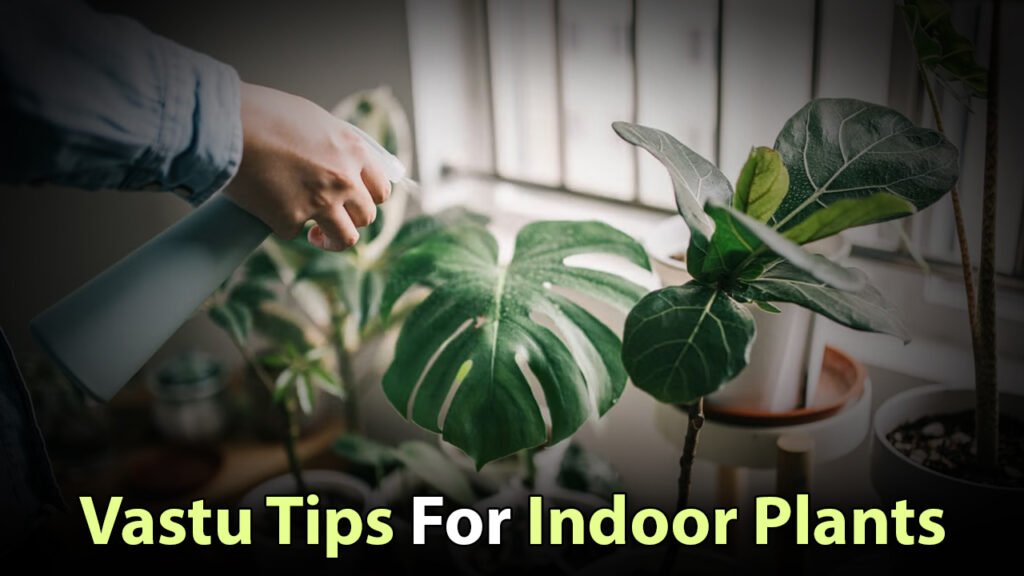Vastu Tips For Indoor Plants
Have you ever walked into a room filled with indoor plants and felt an immediate sense of peace and calm? While the aesthetic appeal and health benefits of indoor plants are widely acknowledged, there’s an ancient practice called Vastu Shastra that delves deeper into the connection between plant placement and energy flow in your living space. In this blog post, we’ll explore how Vastu Shastra provides guidelines for positioning indoor plants to create a harmonious and balanced environment. Whether you’re a seasoned plant enthusiast or a green-thumbed beginner, these insights will help you optimize your living space for positive energy. We’ll also address some common questions about Vastu for indoor plants.
Read blog on: How Cactus Plants Can Impact Vastu?
Understanding Vastu Shastra
Vastu Shastra, often referred to as the ‘Indian Feng Shui,’ is an ancient architectural science that emphasizes the balance of the five elements: Earth, Water, Fire, Air, and Space. When it comes to indoor plants, each plant type and its placement can influence the energy field of a home.
The Five Elements and Plants
- Earth: Plants connect us to the Earth. Use plants with round leaves to enhance stability.
- Water: Consider water plants, like money plants, that can thrive in aquariums or water bowls to symbolize calm and flow.
- Fire: Plants with red flowers can represent the Fire element, bringing vibrancy and energy.
- Air: Tall plants that sway with the breeze enhance the sense of freedom and movement.
- Space: Ensure plants do not overcrowd your living space to maintain an uncluttered environment.
Optimal Plant Placement According to Vastu
Vastu Shastra guides you on where to place different types of plants to maximize their benefits.
Living Room
Place larger plants such as ficus or rubber plants in the corners of your living room. This placement can help circulate energy around the room and also bring life to empty corners.
Bedroom
It’s generally advised to limit the number of plants in the bedroom, as they emit carbon dioxide at night. If you choose to keep plants like peace lilies or lavender, position them towards the east to harness morning sun rays.
Entrance Area
Ornamental plants like palms or money plants are perfect near the entrance to attract prosperity. Make sure they’re potted to avoid energy loss.
“The entrance sets the tone for the energy entering your home. Position plants strategically to invite positivity and wealth.”
Common Types of Vastu-Friendly Indoor Plants
Money Plant (Epipremnum aureum)
A popular choice in Vastu, the money plant, when placed inside the home, can channel financial success. Ideally, position it in the southeast direction, known to be governed by Venus, the planet associated with wealth.
Tulsi (Ocimum sanctum)
Tulsi, or holy basil, is traditionally considered auspicious and purifying. Place it in the north, east, or northeast to absorb negative energies and purify the environment.
Bamboo Plants
Symbolizing prosperity and luck, bamboo plants should be placed in the eastern part of the home or office. Ensure the plant has enough sunlight to flourish.
Conclusion of Vastu Tips For Indoor Plants
Incorporating Vastu principles for indoor plants not only enhances the aesthetic of your home but also contributes to your overall well-being by balancing energy flows. While traditional beliefs offer guidance, you should always prioritize your comfort and preferences when choosing and positioning your indoor plants.
If you want to watch Astrology Videos visit our YouTube channel: Acharya Ganesh
FAQs for Vastu Tips For Indoor Plants
1. Can I keep cactus plants indoors according to Vastu?
Cactus plants are generally not recommended indoors as their thorns can emit sharp energy and cause tension within a living space.
2. Is it advisable to keep bonsai plants inside the house?
From a Vastu perspective, bonsai plants symbolize stunted energy or growth and are not recommended for placement inside the home.
3. What is the best Vastu direction for placing indoor plants?
The ideal directions for placing indoor plants are the east or southeast. These directions attract good energy and contribute to a harmonious environment.
4. Can indoor plants be kept in the kitchen?
Yes, small herbs or plants like basil that thrive in sunlight can be placed on kitchen windowsills. They purify the air and symbolize abundance.
5. How do indoor plants affect mental health?
Apart from Vastu, psychological studies suggest that having plants indoors can reduce stress, enhance mood, and improve concentration levels.
Embrace the principles of Vastu Shastra when choosing and placing your indoor plants. Let them be your partners in creating a serene, prosperous, and healthy environment.

